No products in the cart.
NEWS
Boost Your Tomato Harvest: The Power of Companion Flowers
Transforming your vegetable garden doesn’t just add beauty; strategically planting certain flowers alongside your tomatoes can offer remarkable benefits, leading to healthier plants and more abundant yields. This age-old practice, known as companion planting, involves placing different plants close together to optimize their growth and protection through natural interactions. It’s a cornerstone of organic gardening, utilizing the power of nature to deter pests, welcome beneficial insects, and even subtly enhance flavor.
While companion planting often brings to mind pairing vegetables or herbs like basil, parsley, onions, and garlic with tomatoes, incorporating flowers is equally, if not more, impactful. The right floral companions can create a vibrant ecosystem that supports your tomato plants in myriad ways, making a significant difference between a struggling patch and a thriving, productive garden.
Why Companion Planting Flowers with Tomatoes Works Wonders
Introducing specific flower varieties into your tomato beds isn’t just about aesthetics; it’s a practical gardening strategy backed by observation and experience. These floral allies perform several critical functions that directly benefit nearby tomato plants:
- Natural Pest Control: Many flowers possess strong scents or chemical compounds that repel common tomato pests like hornworms, aphids, whiteflies, and nematodes. Some even act as “trap crops,” luring pests away from your valuable tomato plants, sacrificing themselves to protect the main crop.
- Attracting Beneficial Insects: Flowers are magnets for pollinators, essential for fruit set on many plants (though tomatoes are self-pollinating, a boost in overall garden health helps). More importantly for pest management, they attract beneficial predators like ladybugs, hoverflies, and parasitic wasps. These helpful insects feed on or parasitize the very pests that threaten your tomatoes, providing natural, ongoing pest control.
- Improving Soil Health and Ground Cover: Low-growing or spreading flowers can serve as living mulch, covering the soil surface. This helps suppress weeds, reducing competition for nutrients and water, and also helps retain soil moisture, reducing the need for frequent watering. Some flowers, like borage, are even believed to contribute valuable micronutrients to the soil as they decompose.
- Creating a Balanced Ecosystem: By increasing biodiversity, you create a more resilient garden. A diverse mix of plants helps prevent any single pest population from exploding and encourages a healthy balance between pests and their natural enemies.
Adopting this time-honored gardening method means integrating your flower sowing into your tomato planting schedule. When you’re starting your tomato seeds or transplanting seedlings, consider sowing the seeds of these beneficial flowers nearby to give them a head start together.
Top Flowers to Welcome into Your Tomato Patch
Choosing the best flowers to plant with your tomatoes involves considering their specific benefits, how well they’ll grow in your local conditions, and, of course, your personal aesthetic preferences. Here are some highly recommended options to get you started:
Calendula
Also known as pot marigold, calendula (Calendula officinalis) is a delightful annual flower, often recognized for its cheerful orange blooms. Beyond adding a splash of color, calendula is a powerful companion plant for tomatoes. Its distinctive, somewhat musky scent is particularly effective at deterring a range of pests, notably the dreaded tomato hornworm. It also helps repel aphids, certain nematodes in the soil, and even some mammalian pests.
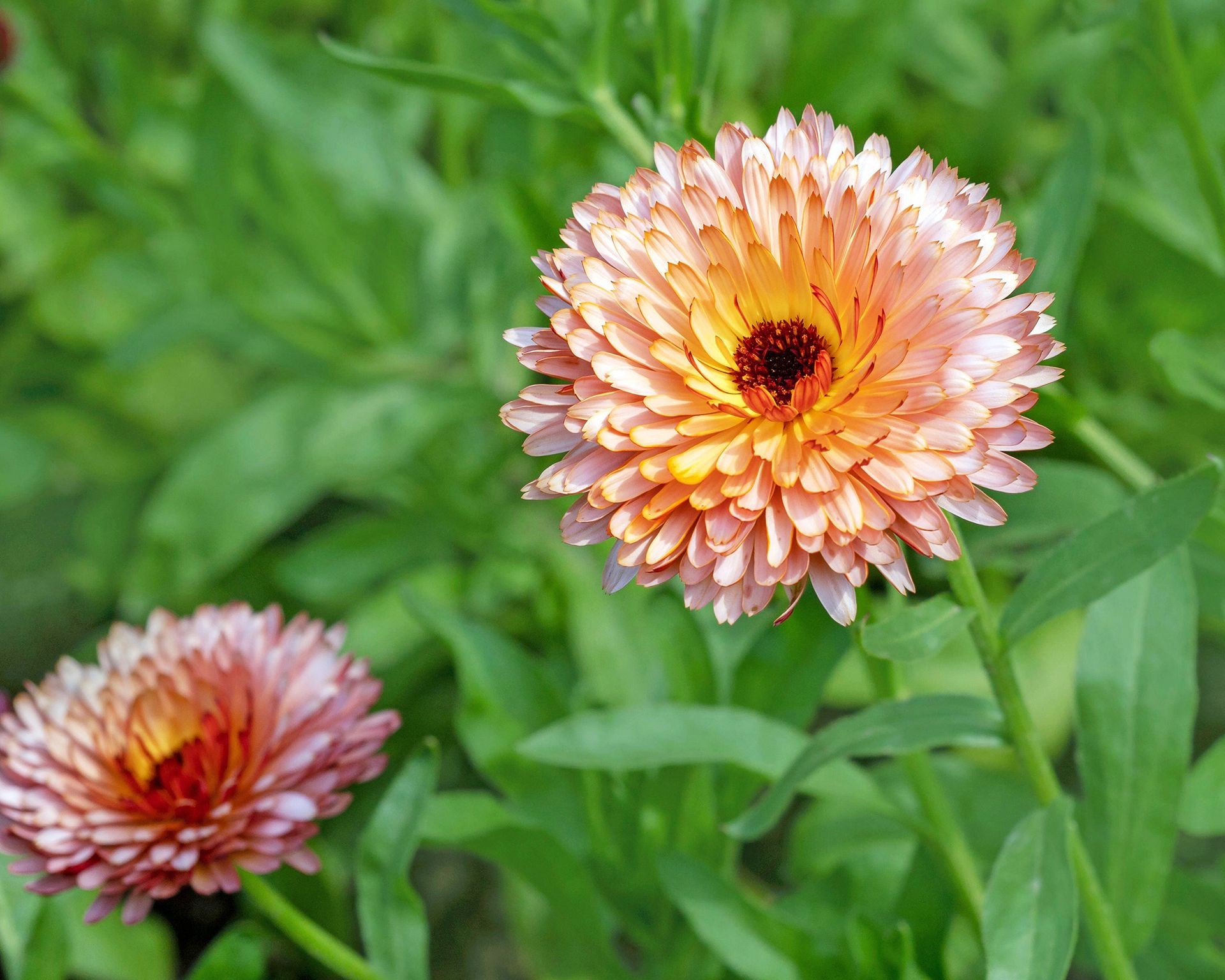 Bright orange calendula flowers blooming in a garden bed, known for deterring tomato pests.
Bright orange calendula flowers blooming in a garden bed, known for deterring tomato pests.
Calendula offers benefits beyond the garden bed; its edible petals can be used in salads, and it’s valued for traditional medicinal properties, adding versatility to your planting choices.
Marigolds
Bright, vibrant, and easy to grow, marigolds (Tagetes spp.) are a classic choice for vegetable gardens for good reason. Their potent aroma, largely due to the chemical limonene, acts as a significant deterrent to numerous pests. For tomatoes, marigolds are excellent at repelling whiteflies, rabbits, and specifically, root-knot nematodes in the soil, which can seriously damage tomato roots.
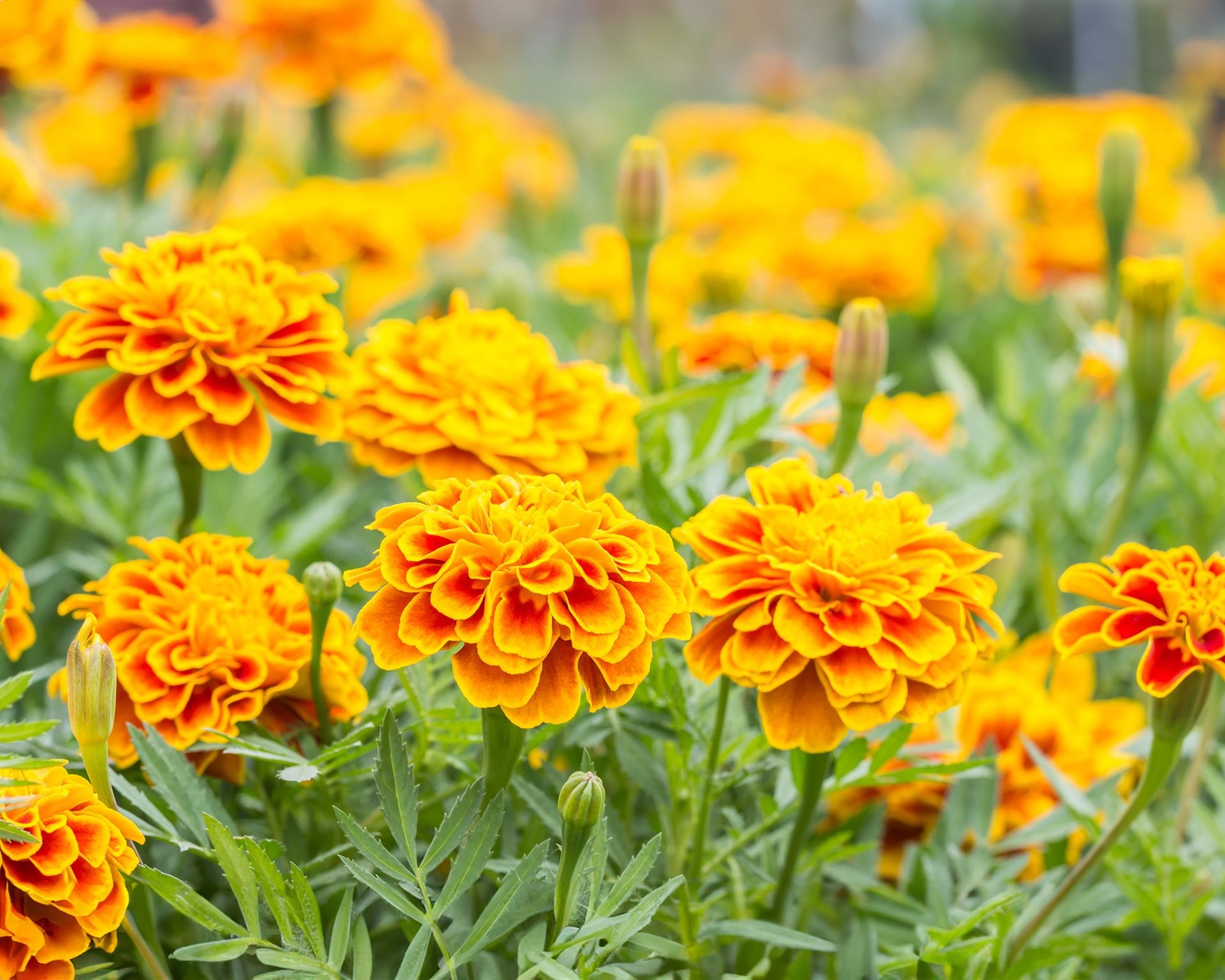 Vibrant French marigolds in shades of yellow and orange, popular companion plants for discouraging pests near tomatoes.
Vibrant French marigolds in shades of yellow and orange, popular companion plants for discouraging pests near tomatoes.
French marigolds (Tagetes patula) are particularly noted for their effectiveness in nematode control. Their cheerful presence brightens the garden while providing serious protection.
Nasturtiums
Nasturtiums (Tropaeolum spp.) are versatile plants with beautiful, often trumpet-shaped flowers and distinctive lily-pad-like leaves. They function primarily as a highly effective trap crop for several common garden pests, including aphids and whiteflies. These pests seem to prefer nasturtiums over other plants, drawing them away from your precious tomatoes. Nasturtiums also attract beneficial hoverflies, whose larvae are voracious aphid predators.
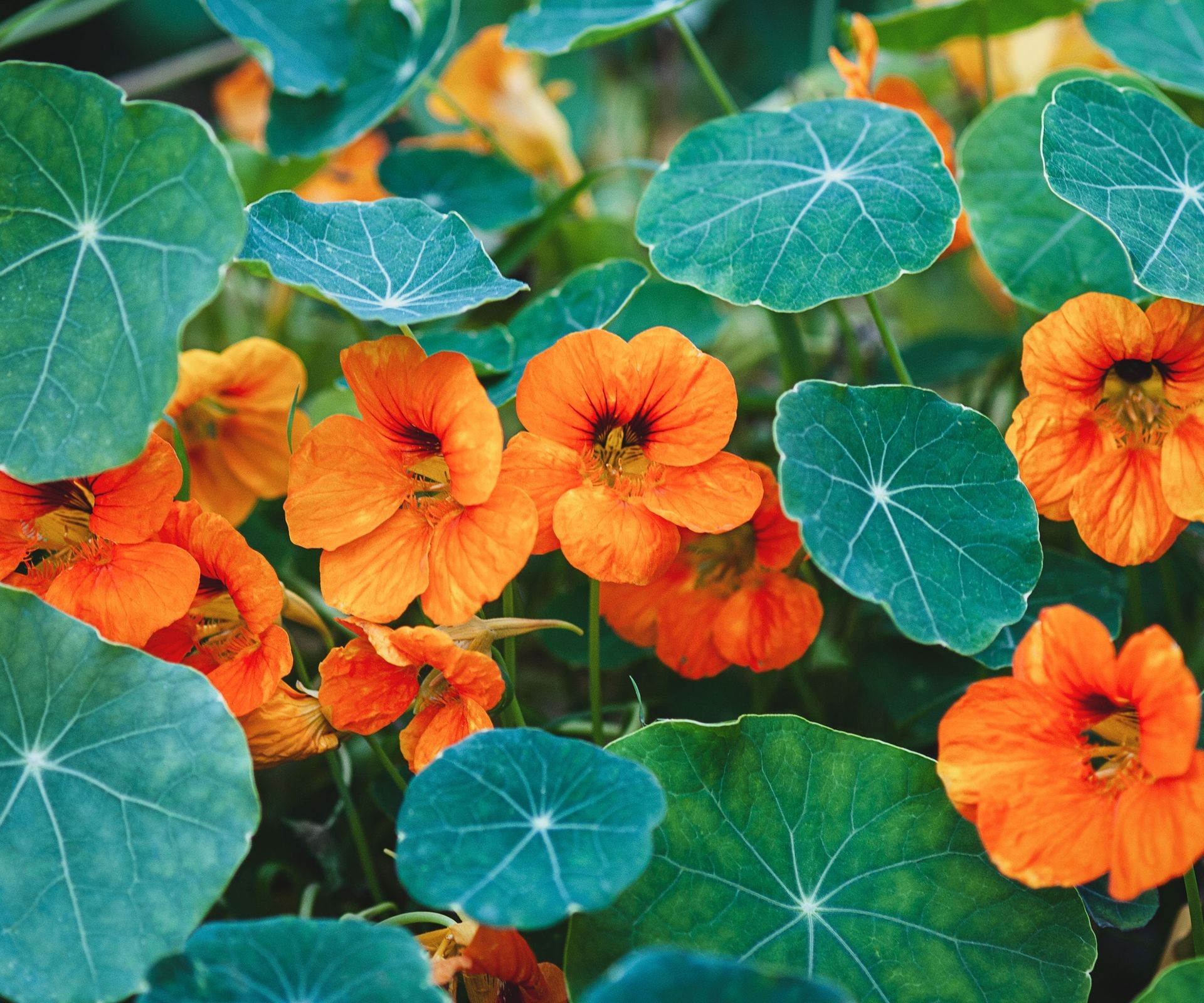 Colorful nasturtium plants with orange and yellow flowers, acting as trap crops and ground cover in a vegetable garden.
Colorful nasturtium plants with orange and yellow flowers, acting as trap crops and ground cover in a vegetable garden.
Adding to their appeal, nasturtiums are edible – both the leaves and flowers have a peppery flavor perfect for salads. Their vining or spreading habit also provides natural ground cover, helping to suppress weeds and keep soil moist around tomato plants.
Lavender
Known for its soothing aroma and beautiful purple spikes, lavender (Lavandula spp.) is a favorite in many gardens. While primarily an herb, its strong scent provides valuable pest deterrence in the vegetable patch, effectively repelling insects like flea beetles and certain nematodes that bother tomatoes. Lavender flowers are also attractive to a wide range of beneficial pollinators, boosting the overall health of your garden ecosystem.
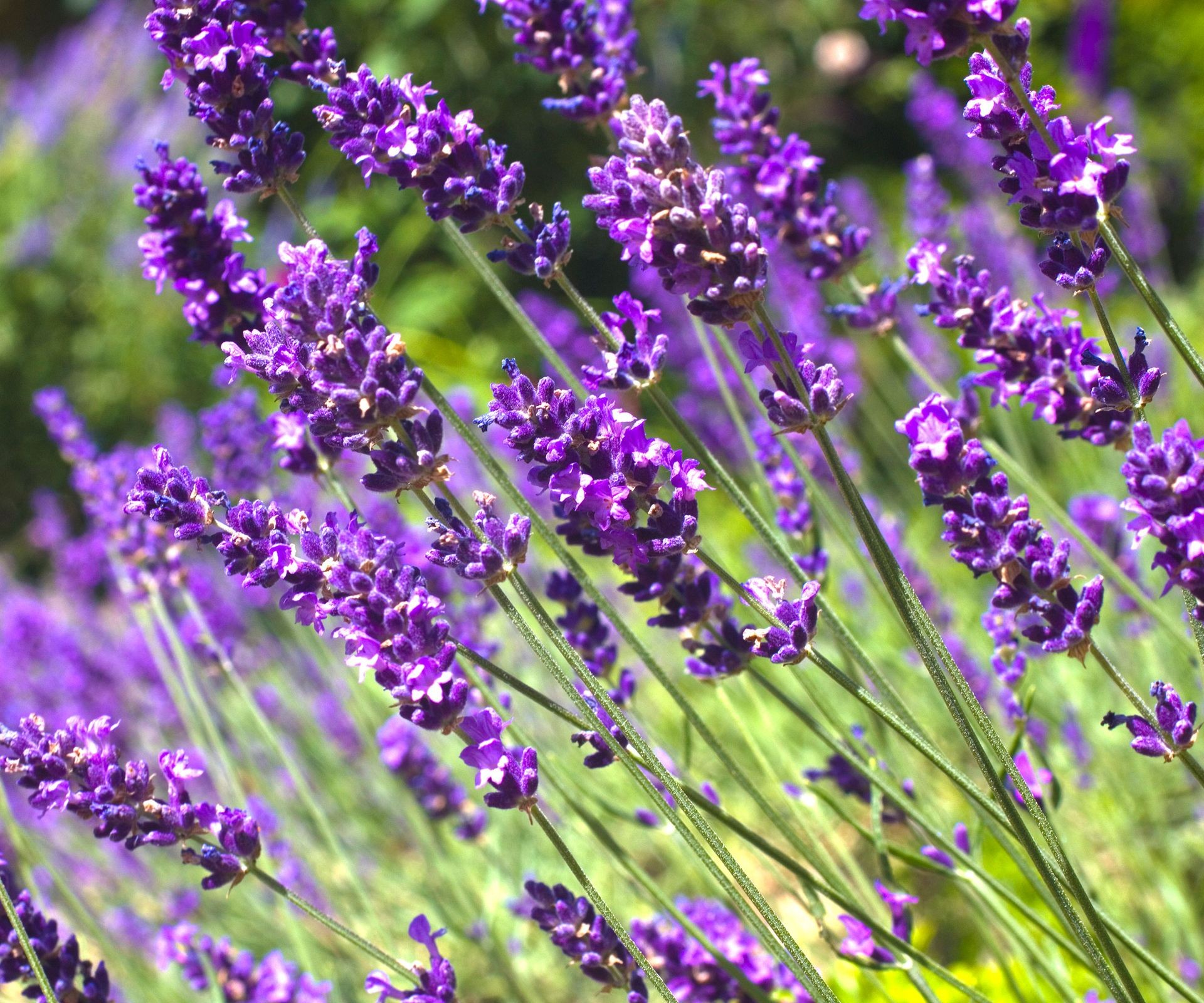 Fragrant purple lavender flowers in a garden, used as a companion plant to repel insects near tomatoes.
Fragrant purple lavender flowers in a garden, used as a companion plant to repel insects near tomatoes.
It’s important to note that lavender typically prefers drier, less fertile soil compared to tomatoes, which crave consistent moisture and richer soil. Growing lavender in containers placed near your tomato plants is an excellent way to utilize its benefits while meeting its specific growing needs.
Borage
Often grown specifically for its companion planting benefits and striking blue, star-shaped flowers, borage (Borago officinalis) is technically an herb. Its presence near tomatoes is highly beneficial. Borage is known to deter tomato hornworms, a major pest concern. It also attracts valuable insects, particularly pollinators and a type of parasitic wasp that preys on aphids, providing targeted pest control.
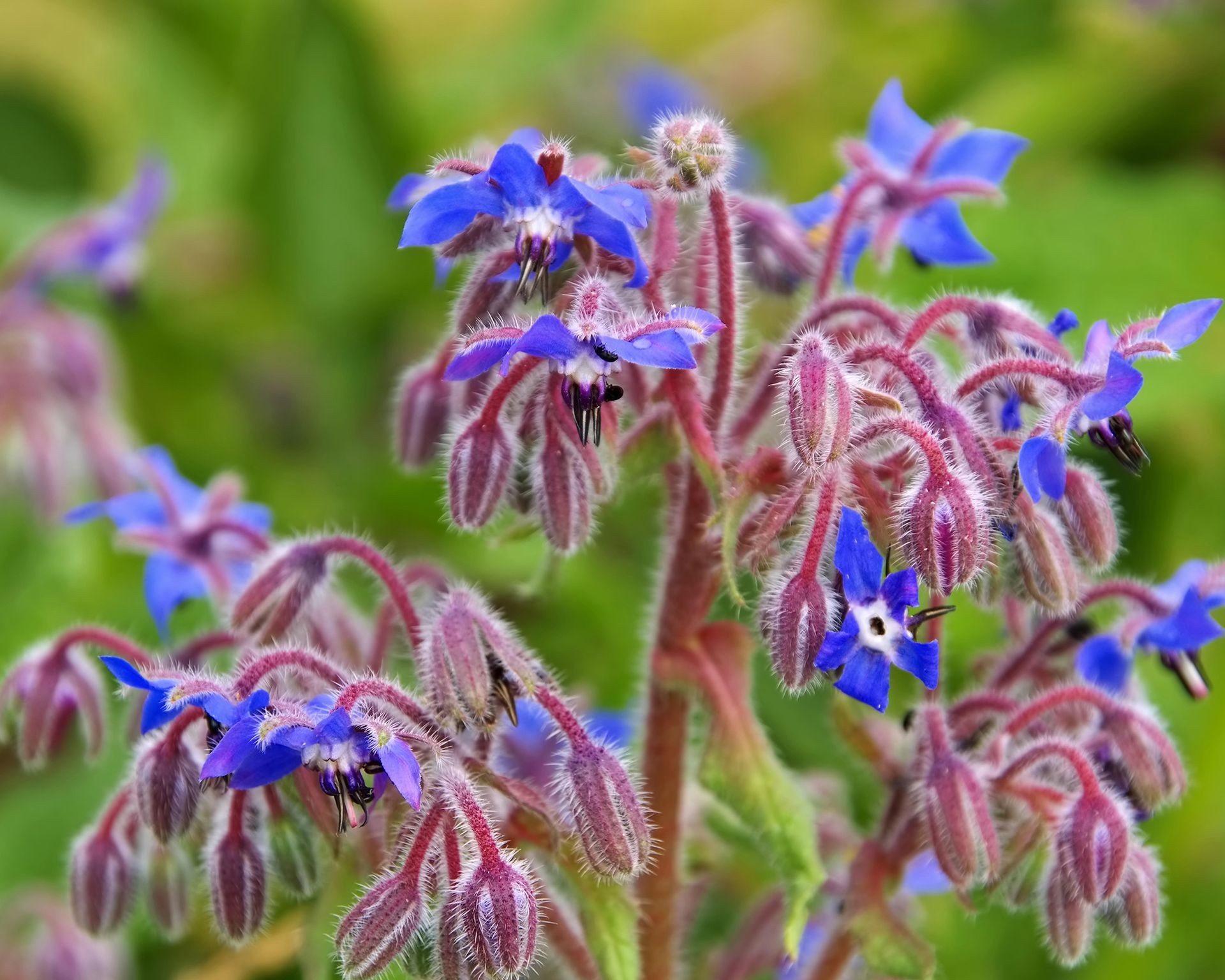 Distinctive blue star-shaped borage flowers attracting beneficial insects and improving soil for tomato plants.
Distinctive blue star-shaped borage flowers attracting beneficial insects and improving soil for tomato plants.
Furthermore, borage is thought to accumulate certain micronutrients, like calcium and potassium, in its leaves, which are then released back into the soil as the plant decomposes, potentially benefiting nearby tomato plants.
Cosmos
For novice gardeners or those seeking easy beauty and significant beneficial insect attraction, cosmos (Cosmos bipinnatus) is a fantastic choice. These simple yet elegant annuals are incredibly effective at drawing in a wide variety of beneficial insects, from pollinators to predators. Green lacewings, in particular, are strongly attracted to cosmos and are fierce predators of common tomato pests like aphids, thrips, and scale insects. Planting orange cosmos is often recommended to specifically attract green lacewings.
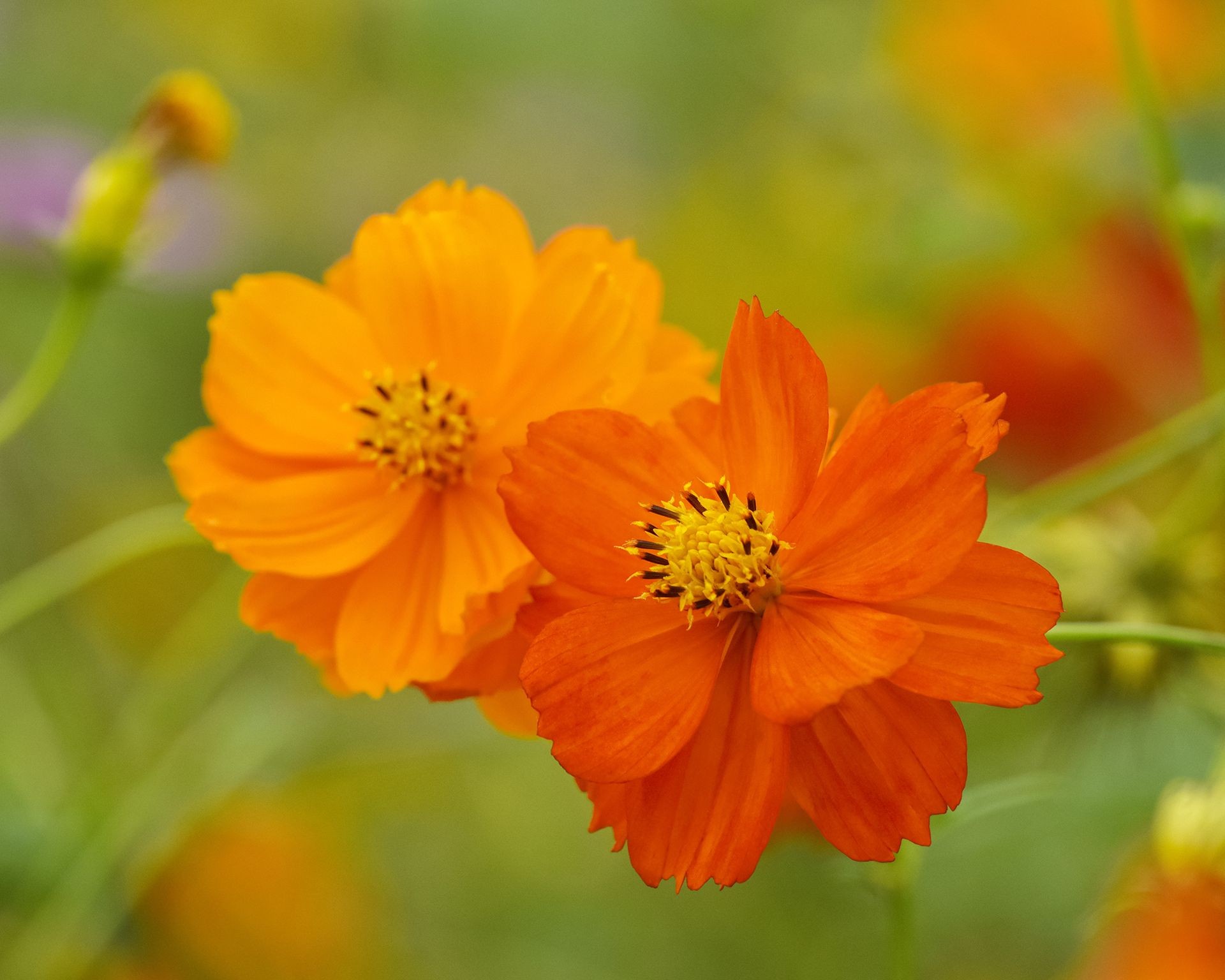 Beautiful orange cosmos flowers attracting beneficial predator insects like green lacewings to protect tomatoes.
Beautiful orange cosmos flowers attracting beneficial predator insects like green lacewings to protect tomatoes.
Be mindful of their potential height; some cosmos varieties can grow quite tall. Ensure they are positioned where they won’t shade out your sun-loving tomato plants, which need full sun for optimal growth and fruiting.
Sweet Alyssum
Sweet alyssum (Lobularia maritima) is a low-growing plant that produces a profusion of tiny, fragrant flowers, often in white, pink, or purple. Its sweet scent and abundant blooms make it highly attractive to beneficial predator insects, such as hoverflies and predatory wasps, which help keep pest populations in check.
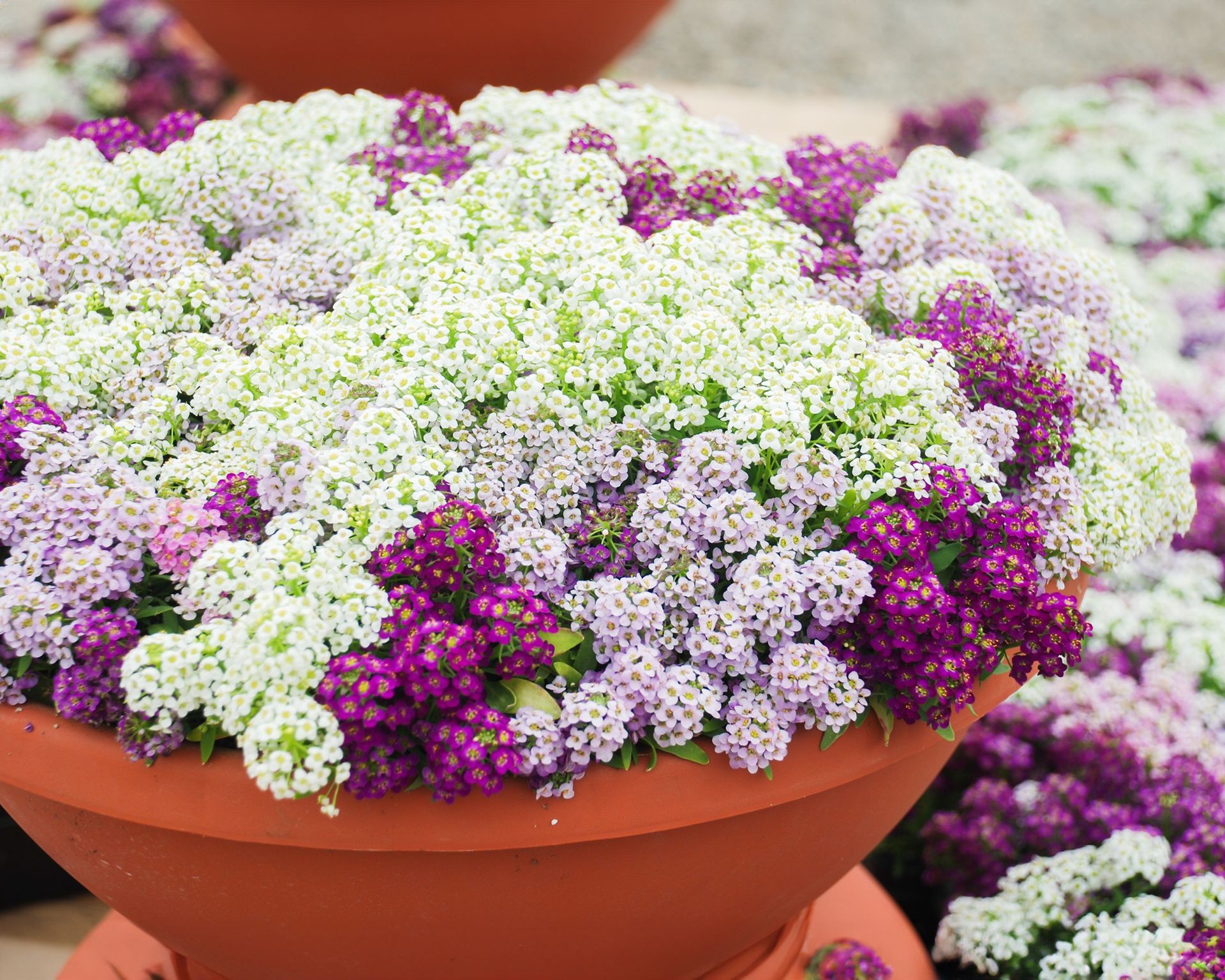 Sweet-smelling sweet alyssum flowers forming low ground cover, attracting beneficial insects for pest control in tomato gardens.
Sweet-smelling sweet alyssum flowers forming low ground cover, attracting beneficial insects for pest control in tomato gardens.
Due to its spreading, low-growing habit, sweet alyssum acts as an excellent living groundcover, suppressing weeds and conserving soil moisture. It’s particularly useful for container-grown tomatoes; planting it at the base allows it to spill attractively over the sides while providing its benefits.
Zinnias
Zinnias (Zinnia elegans) are garden powerhouses, offering vibrant color from summer until frost and serving as exceptional companion plants for tomatoes. They create a stunning visual contrast with green tomato foliage and attract a wealth of pollinators and beneficial insects, including ladybugs, parasitic wasps, and hoverflies – all key players in natural pest control.
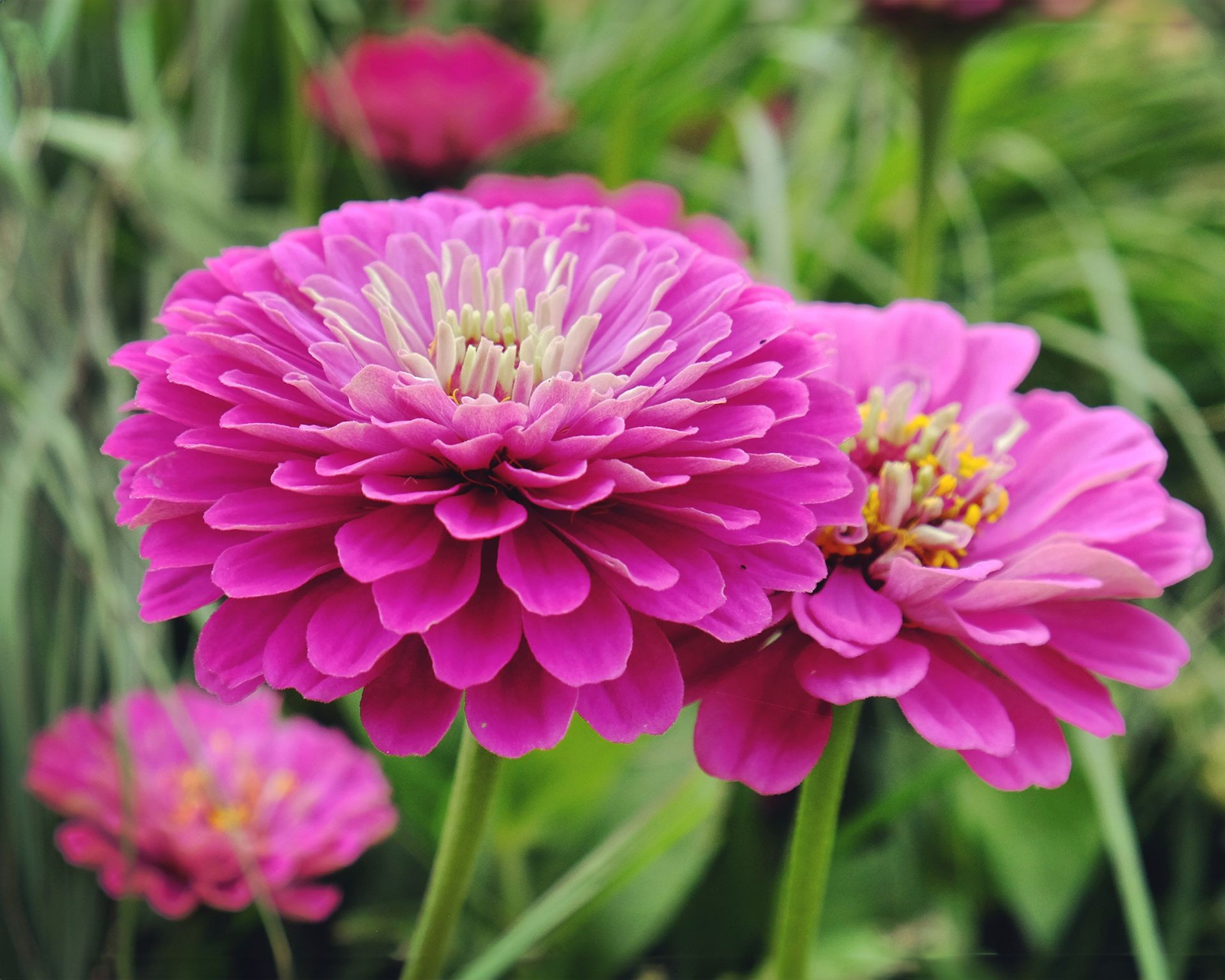 Striking purple zinnia flowers blooming in a garden, excellent for attracting pollinators and beneficial insects to tomato beds.
Striking purple zinnia flowers blooming in a garden, excellent for attracting pollinators and beneficial insects to tomato beds.
An added bonus is that zinnias make fantastic cut flowers. You can harvest beautiful homegrown bouquets throughout the season while your tomato plants simultaneously reap the benefits of their presence.
Practical Tips for Planting Companion Flowers with Tomatoes
Implementing a successful companion planting strategy with flowers requires thoughtful planning. Keep these tips in mind as you design your tomato patch:
- Strategic Placement: While flowers need to be relatively close to tomatoes to exert their influence, they don’t need to be right on top of them. Follow spacing recommendations for both the flowers and the tomatoes to prevent overcrowding, which can lead to increased disease risk and competition for resources. Growing flowers in containers placed strategically among or around your tomato plants is a great alternative.
- Sunlight Considerations: Tomatoes demand full sun (at least 6-8 hours daily) for optimal fruiting. Be mindful of the mature height of the flowers you choose and plant taller varieties where they won’t cast excessive shade on your tomato plants.
- Matching Growing Needs: Ideally, choose flowers that thrive in similar conditions to tomatoes, such as well-draining soil and consistent moisture. Consider your specific soil type and local climate, including your gardening zone, to ensure the chosen flowers will flourish alongside your tomatoes.
- Ongoing Monitoring: Companion planting is a powerful tool, but it’s not usually a complete substitute for observation. Regularly inspect your tomato plants and companion flowers for signs of pests or diseases. This allows you to catch potential problems early and intervene if necessary, even with your natural pest control system in place.
Cultivate a Thriving Tomato Garden with Biogarden.asia
Embracing the principles of companion planting by incorporating beneficial flowers is a rewarding step towards a healthier, more productive tomato garden achieved through natural methods. These beautiful bloomers not only enhance the visual appeal of your vegetable patch but actively contribute to a balanced ecosystem that protects your tomatoes and boosts your yield.
Discover the difference companion planting can make. Start planning your floral additions and experience the joy of a thriving garden supported by nature’s allies. Find everything you need to begin your companion planting journey, including a wide selection of seeds for both tomatoes and beneficial flowers, along with essential gardening supplies, at Biogarden.asia. Get ready to cultivate your most abundant and beautiful tomato harvest yet!



